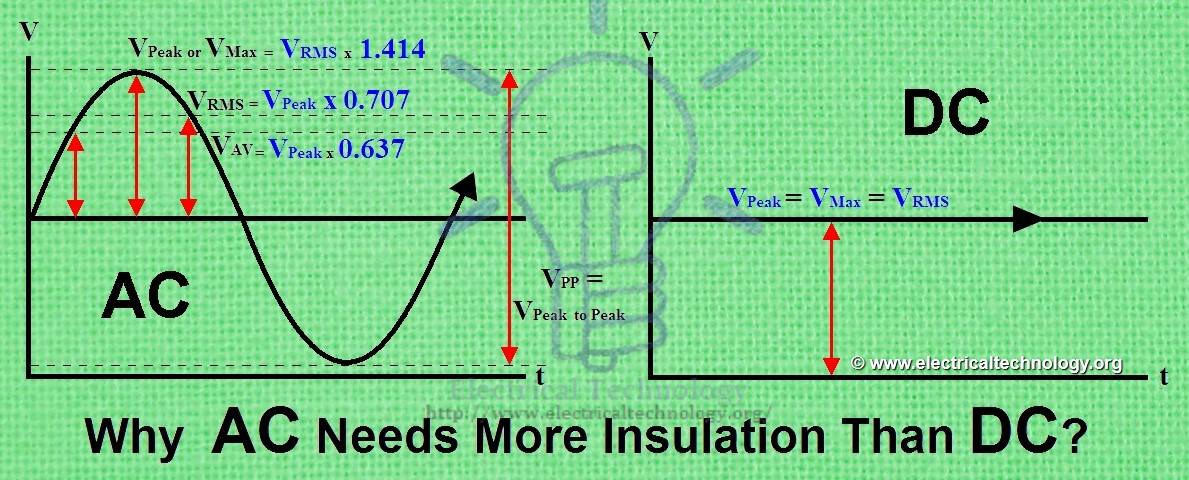For the same working voltage, the potential stress on the insulation is less than in case of DC system than that AC system. Therefore , a DC line requires less insulation.
In other words A DC System has a less potential stress over AC system for same Voltage level and power rating, this is why AC needs more insulation than DC system?
Let’s explain in detail..
When we talk about DC, let say 220 Volt DC, it means the maximum value (peak value) of the voltage is 220V, but when we talk about 220 Volt AC (As in our home distribution system = single phase AC Supply = 220 V AC or 110V AC in the US), then it is basically 220 RMS (Root Mean Square = √2) value, i.e. it is the RMS value of 220V AC.
The peak value of AC voltage is equal to √2xVRMS = 1.414 x VRMS (where √2 = 1.414)
In other words. The peak value of AC voltage = VRMS / 0.707
Now, in our case, The peak value of 220V AC = 220V/0.707 or 220V x 1.414 = 311V AC peak.
Its mean 220VDC = 311V AC peak. That’s why AC Voltage needs more insulation than DC voltages for the same rating of Voltage and Power.
In addition, 220 Volt AC can reach to its peak value of 220/0.707 = 311V peak. Its Mean 220 Volt AC RMS reaches to 311 Volts peak and again to -311V peak in one hertz (Hz) of frequency (where frequency = cycles/Sec).
That’s why AC needs more insulation than DC.
Click image to enlarge

As shown in the above diagram, RMS value of AC voltage is below than its peak value and we have to provide the insulation for the peak value or maximum voltage, not for the RMS value. And in DC systems, RMS value and peak values of voltages are equal.
Now, you have a clear understanding of the need for more insulation in AC system as compared to the DC system for the same working voltage and power rating.

No comments:
Post a Comment